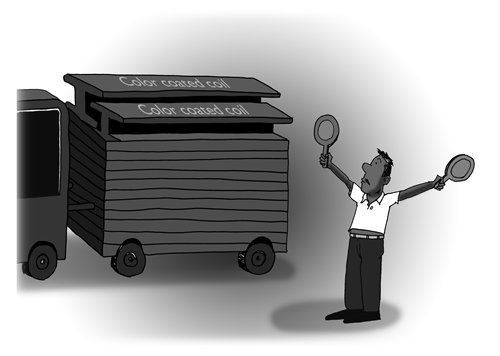
(Photo: Global Times)
On June 13, Pakistan's National Tariff Commission imposed anti-dumping duties on color-coated coil imports from China and South Africa. The decision triggered doubts about the China-Pakistan relationship, but these concerns are unfounded. The case is an economic one, rather than a political dispute, and it's not necessary to read too much into it.
China and Pakistan have a firm and burgeoning relationship. The Belt and Road (B&R) initiative has been fruitful in Pakistan. Gwadar Port and the China-Pakistan Economic Corridor have set good examples for the B&R.
Yet some observers claimed to be shocked by Pakistan's anti-dumping move against the Chinese products, since the two countries are on great terms. This mindset overlooks Pakistan's demand to develop its own steel industry, as well as the realities of the steel industries on both sides.
The anti-dumping move was taken to protect Pakistan's steel industry. According to reports by the Pakistan media, the main reason to enact a punitive tariff on color-coated coil was that some commercial importers deliberately declared corrugated galvanized sheet, which was already on the anti-dumping list, as color-coated coil to avoid paying tariffs.
As a result, profits of domestic corrugated galvanized sheet producers have been sliced from $80 to $20 per ton. This situation has affected the production and inventory of steel companies in Pakistan. Every country has the incentive to protect its industries, and China understands that.
China's steel industry has an overcapacity problem. In 2017, China - with 830 million tons of output - was still the largest steel producer in the world. It also accounted for nearly half of the world's total crude steel production, the World Steel Association reckoned.
Steel made in China and exported worldwide inevitably affects the local industry in each country, to some extent. In other words, Chinese and Pakistani steel companies must compete in the Pakistan market, where many B&R projects are taking place.
The anti-dumping duties on color-coated coil will not put a dent in total steel exports from China, which produces a very diverse range of steel. Beside flat products, which include color-coated coil, China also exports significant volumes of long products, iron pipes and so on. Although Pakistan is one of the major markets for flat products, its import volume last year is still less than one-third of South Korea's 6 million-plus metric tons.
With the advance of infrastructure construction projects under the B&R initiative, prospects for China's steel exports to Pakistan are promising. Pakistan's apparent per capita steel consumption is lower than India's 65.2 kilograms and much lower than China's 522.8 kg. There is still much potential for development. Moreover, steel products from Pakistan are still at a relatively low level, leaving plenty of room for imported steel.
Chinese enterprises should learn from the anti-dumping duties to adjust their strategies and revamp their production to focus on advanced steel products. This strategy would be in line with China's development direction, and it would also make the steel industries of the two countries more complementary.
Most domestic steel mills are reducing production. For example, Baosteel in Shanghai and Wuhan Iron and Steel (Group) Corp have merged into China BaoWu Steel Group Corp, and the combined company's crude steel production has declined.
Changing production methods will allow China's steel to take up the market segments that Pakistani companies cannot satisfy. There are many varieties of steel, and while general construction materials are not difficult to produce, high-end steel demanded by other industries such as high-speed railways, shipbuilding and aircraft is still challenging for Pakistan.
For instance, the F-22 frigate is now being built in Pakistan, but in terms of the steel needed for this ship, Pakistan's capacity may be limited. China, which has mastered the skills of producing aircraft carrier steel plate, can be one potential supplier.
Chinese companies with high-end steel products can boost Pakistan's local companies as well. Competition and technology transfer will help them accelerate their product upgrading and improve their productivity. Pakistan needs time to develop and improve its own steel industry. As steel products will be in strong demand for B&R infrastructure projects, such as highways, railways and power plants, support from China will be meaningful.
Strong China-Pakistan relations will not be damaged by such a small trade incident. Competing for economic interests is inevitable, even among China's provinces, not to mention between two countries. Therefore, this issue is not surprising and will not affect the traditional friendship between China and Pakistan. Economic issues should be solved on the economic level.


